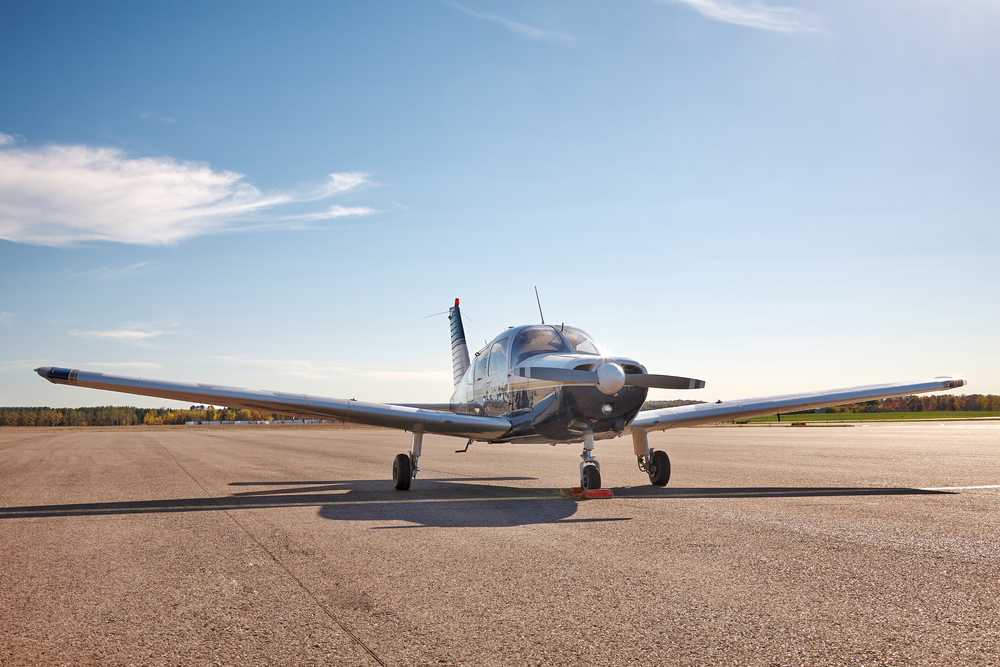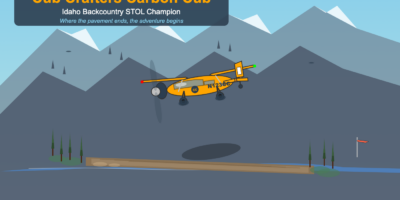A safety pilot enables pilots to practice instrument flying while maintaining visual lookout for traffic. This arrangement allows pilots to build instrument currency and proficiency without an instructor. Understanding the safety pilot role, requirements, and limitations helps pilots safely practice approaches and holds while complying with regulations.
Quick Answer: A safety pilot is a rated pilot occupying a control seat who maintains visual lookout while another pilot flies under simulated instrument conditions (hood or foggles). The safety pilot must hold at least a private pilot certificate with appropriate category/class ratings for the aircraft. Both pilots can log flight time—the flying pilot logs actual flying time (solo if safety pilot isn’t acting PIC), and the safety pilot can log PIC if acting as PIC. Required when practicing under the hood per FAR 91.109(b).
Legal Requirements for Safety Pilots
FAR 91.109(b) requires a safety pilot when operating under simulated instrument conditions. The safety pilot must hold at least a private pilot certificate with category and class ratings appropriate to the aircraft. If the aircraft requires a type rating, the safety pilot needs that as well. Medical certificate requirements depend on who is acting as PIC.
The safety pilot must occupy a control seat with adequate vision forward and to each side. This typically means the right front seat in single-engine aircraft. The aircraft must have dual controls allowing the safety pilot to take control instantly. The safety pilot’s primary duty is maintaining visual separation from other traffic and obstacles.
Who is Pilot in Command?
Either pilot can act as PIC depending on the agreement. If the flying pilot (under the hood) is rated and current in the aircraft, they can act as PIC with the safety pilot serving as a required crewmember. Alternatively, the safety pilot can act as PIC if they meet all PIC requirements including currency and medical. This determination affects logbook entries and insurance coverage.
When the safety pilot acts as PIC, they must meet all PIC currency requirements including takeoffs and landings. The safety pilot bears ultimate responsibility for the flight’s safety. If the flying pilot acts as PIC, they retain responsibility despite being unable to see outside. This arrangement requires clear communication about who is acting as PIC before the flight begins.
Logging Flight Time
The flying pilot (under the hood) always logs the time they’re manipulating the controls. They log this as “simulated instrument” time in their logbook. If acting as PIC, they log it as PIC time. If not acting as PIC, they log it as solo time (since they’re the sole manipulator of the controls).
The safety pilot can log PIC time only if they’re acting as PIC. They log this time because they’re acting as a required crewmember per FAR 91.109. If the safety pilot is merely along for the ride without acting as PIC, they cannot log the time. Clear documentation prevents logbook discrepancies during certificate applications or FAA scrutiny.
Typical Safety Pilot Missions
Most safety pilot flights involve practicing instrument approaches, holds, and unusual attitudes. Pilots building IFR currency fly six approaches, holding procedures, and intercepting courses within the preceding six months per FAR 61.57(c). The safety pilot enables this practice without paying for an instructor or flight following services.
Safety pilot arrangements work well for instrument-rated pilots maintaining proficiency between IFR flights. Practicing partial-panel procedures, approach types (ILS, RNAV, VOR), and missed approaches keeps skills sharp. The safety pilot benefits by observing techniques and potentially logging PIC time. Both pilots share aircraft costs, making practice affordable.
Communication and Procedures
Before flight, clearly establish who is acting as PIC and how costs will be split. Discuss the plan including which approaches to fly and how long the session will last. Agree on procedures for transferring control—typical phraseology is “You have the controls” / “I have the controls.” Establish that the safety pilot will call out traffic and take control if necessary.
During flight, the safety pilot scans for traffic continuously. Call out traffic using clock positions and altitude (“Traffic, 2 o’clock, 500 feet below”). Monitor altitude, airspeed, and aircraft configuration. Don’t allow the flying pilot to enter IMC unintentionally—maintain VFR conditions always. Brief missed approach procedures before each approach. The safety pilot should follow along on charts to anticipate the flying pilot’s actions.
Insurance Considerations
Verify your aircraft insurance allows safety pilot operations. Some policies require all pilots to be named or meet specific experience requirements. Both pilots should be listed on the insurance or meet open pilot warranty requirements. The PIC designation affects coverage—the policy may require the PIC to meet certain minimums.
Consider non-owned aircraft insurance if acting as safety pilot frequently in others’ aircraft. This coverage protects you from liability if an accident occurs. Review both pilots’ medical certificates and flight reviews to ensure compliance. An accident with regulatory non-compliance voids insurance coverage and creates legal liability.
Common Mistakes to Avoid
Don’t allow the flying pilot to remain under the hood in marginal VFR conditions. If visibility drops or clouds appear, terminate the hood work immediately. The safety pilot must maintain VFR—entering IMC creates an emergency requiring IFR clearance. Never practice approaches in actual IMC using a safety pilot—that requires an instrument rating and ATC clearance.
Avoid distractions like using your phone or reviewing charts without maintaining visual scanning. The safety pilot’s primary job is seeing and avoiding traffic. Don’t practice in high-traffic areas without flight following—approach control provides traffic advisories making safety pilot duties easier. Never act as safety pilot if you’re not proficient in the aircraft or don’t meet currency requirements to be PIC if acting as PIC.
Alternatives to Safety Pilots
Flight training devices and simulators allow instrument practice without a safety pilot. These devices build procedural knowledge and scan patterns efficiently. However, simulators don’t provide actual flight time toward currency—only FAA-approved training devices count. Simulators complement but don’t replace safety pilot flying.
Hiring a CFII (Certificated Flight Instructor – Instrument) provides professional instruction beyond basic safety pilot services. The instructor teaches techniques and corrects errors. For pilots struggling with specific procedures, an hour with a CFII outweighs multiple safety pilot sessions. However, CFIIs cost $60-$100 per hour versus splitting costs with a safety pilot friend.
Finding Safety Pilots
Local flying clubs and flight schools connect pilots seeking safety pilots. Online forums like pilots of America or Reddit’s r/flying have safety pilot sections. Many airports have bulletin boards advertising safety pilot availability. Social media groups for your local airport often facilitate connections.
When finding a new safety pilot, fly with them initially as a familiarization flight. Assess their proficiency and communication skills. Agree on standards and procedures before beginning hood work. Regular safety pilot partnerships develop trust and efficiency. Many instrument-rated pilots establish reciprocal arrangements—trading safety pilot duties so both maintain currency affordably. These partnerships provide reliable practice partners and strengthen pilot skills through observation and discussion.
Join the Aircraft Insider Community
Get exclusive backcountry flying tips, aircraft reviews, and Western aviation destinations delivered to your inbox.
✈️ No spam, ever. Unsubscribe anytime. Privacy respected.


Leave a Reply